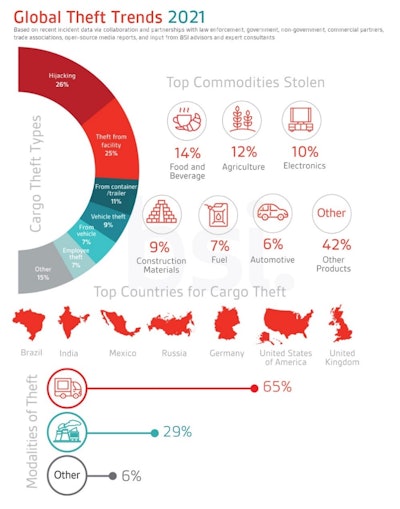
Widespread congestion at ports and inland facilities has led to increased opportunity for thieves, according to a recent TT Labs report. The shift in emphasis from risk of in-transit, vehicle- based attacks to losses while cargo is at-rest is putting storage locations at risk.
“Constant vigilance is required in order to combat the growing risk divergence in theft trends,” says Mike Yarwood, managing director, loss prevention at TT Club. “Criminals are quick to adapt to prevailing conditions and have swiftly responded to the increased opportunities that supply chain congestion presents through the amount of cargo laying idle. In addition, the transport industry’s growing reliance on technology and a rapidly changing market for sourcing materials and components have opened up new avenues for criminals to take advantage of companies’ increased vulnerabilities. TT, along with its partners is committed to tracking and reporting on such developments in criminals methods of operation in order to reduce the risk of losses wherever possible.”
From TT Club:
- Globally cargo thefts from or of vehicles in-transit declined as incidents at storage facilities rose to nearly 30%.
- In North America, prevalence of port congestion and railhead delays are seen as crucial factor.
- Idle times in European locations also augmented theft and stowaway risk.
- Strict COVID-19 protocols at Asian ports, particularly in China, created delays and backlogs leading to theft opportunities.
- Increased influence of insider infiltration into operator organizations such as haulage companies and warehousing facilities.
- Adoption by criminals of new technology- assisted by increased digitalization of supply chain processes and communication.
- The products most frequently involved in global cargo thefts overall last year included agricultural produce (12%), food and beverage (14%), construction materials (9%) and electronics (10%). Significantly, many of the materials used to produce the latter two, such as nitrogen, iron ore, lumber, steel and semiconductors, have all experienced sharp price increases since the outbreak of the global pandemic due to shortages with a consequent increase in the value of the manufactured products.
 TT Club
TT Club




















